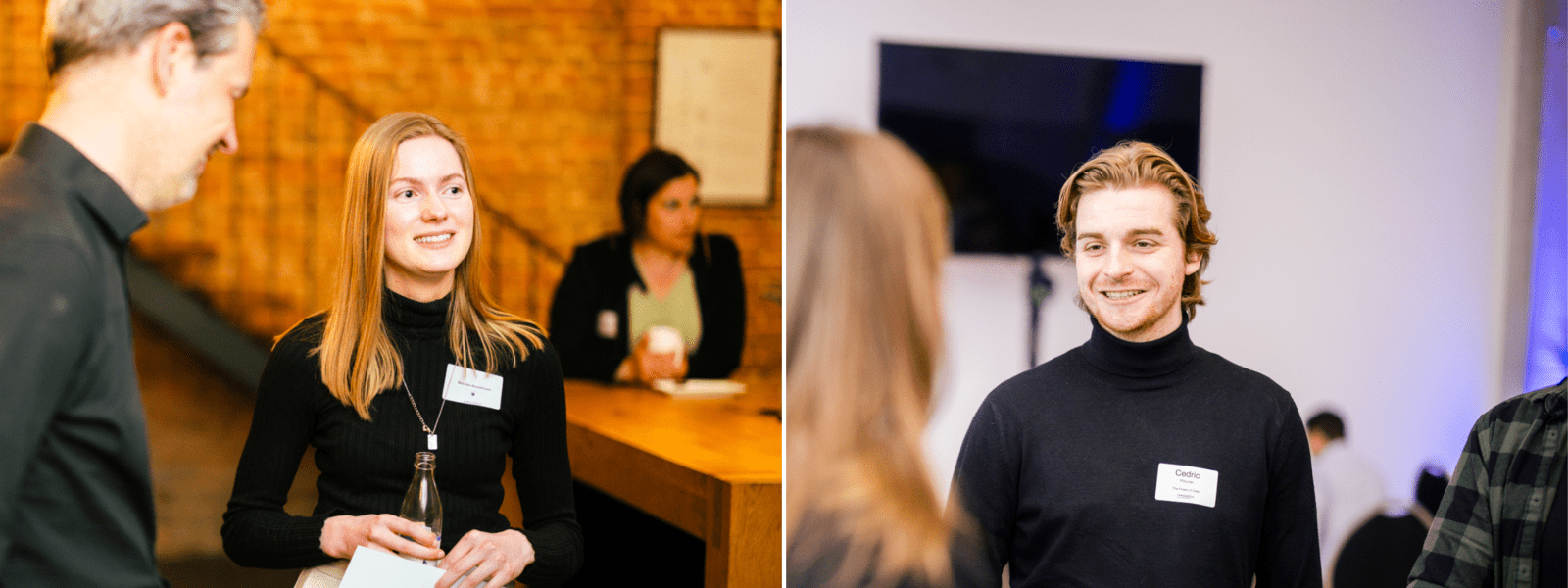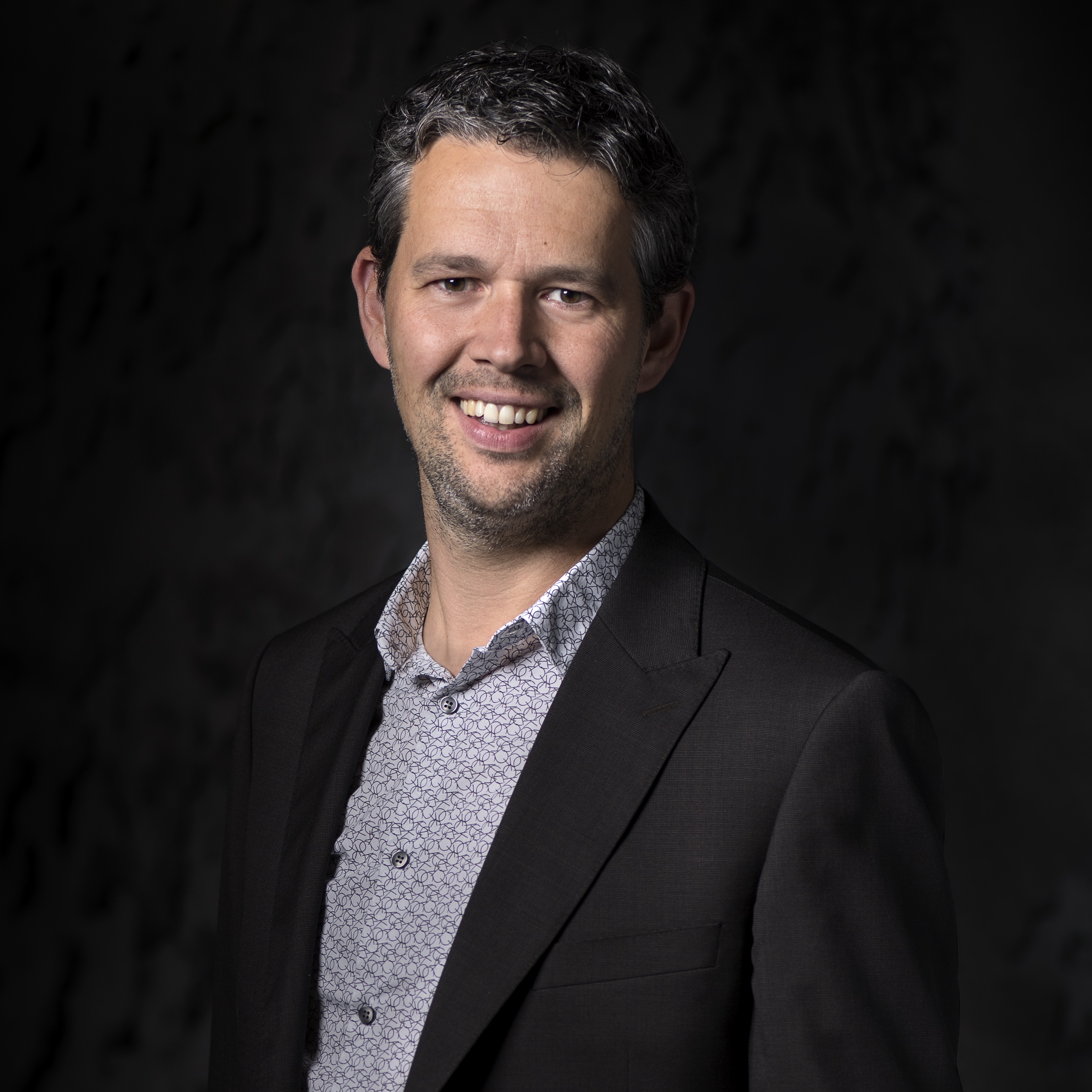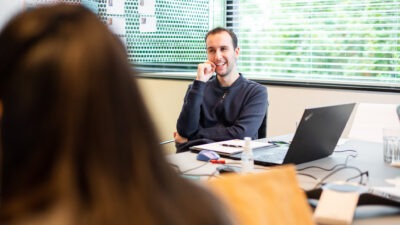How 2 Exellysts got ownership of a sustainability project at HPE
on 12 June 2023 for GraduatesExellysts Sien Van Broekhoven and Cedric Plouvier got to tackle a really cool sustainability project at their client, HPE. “We learned a lot from this project, and it was great that we got so much responsibility and autonomy,” Sien says. “Afterwards, we got to present our results to HPE Worldwide. Great for our visibility,” Cedric adds.
In this interview, Sien Van Broekhoven and Cedric Plouvier talk about their Greenlake Consumption Analysis project at HPE. What is it like tackling a project like that when you’re still a starting professional with limited experience? What’s it like working at HPE, and why is it great to be doing it through Exellys? Let’s find out.

Can you tell us a bit about yourself? What’s your academic background, and what is your role at Hewlett Packard Enterprise (HPE)?
Cedric: I studied Engineering Sciences at the University of Antwerp. I specialise in artificial intelligence and machine learning. At HPE, I work as a Solution Architect for the Advisory and Professional Services (A&PS). Basically, I do technical solution designs for custom client projects.
Sien: I got my Bachelor’s degree in Electronics-ICT at Thomas More. Via Exellys, I got an internship at HPE and after graduation I started working for them as a Technical Consultant, also for A&PS. My role partly overlaps with Cedric’s, though I do less solution design. Usually, when the design is done, I do the technical implementations of these solutions. My main focus is on networking (Aruba) and public cloud solutions (Compute).
What’s it like working at HPE as an Exellyst? What would you say is the added value of Exellys for graduates?
Cedric: After graduation, I was contacted by many different companies. For me, it was stressful to choose. If I chose wrong, it wouldn’t be so easy to change companies. It’s possible of course, but it’s a lot of fuss and kind of a big step. The idea that I could just switch clients if I chose the wrong client at Exellys, was reassuring. Although it wasn’t necessary: I got matched with the right client straight away.
The network and the various trainings are also a big advantage of working for HPE through Exellys. Especially the soft skills trainings, like the presentation skills course for instance. HPE prioritises technical trainings, so it’s nice to get the opportunity to improve soft skills thanks to Exellys.
Sien: Personally, I’m a big fan of the coaching at Exellys. When you start working for a big company as a graduate, typically you don’t get a lot of guidance. You have to do it alone for the most part. That’s why it’s very valuable to get that coaching from Exellys. Your Talent Development Manager follows your career from the beginning and discusses your progress with you, not just on a technical level but on a personal level as well. In general, the fact that Exellys is a lot more personal is a big plus for me.

One of your first projects at HPE was a sustainability-focused project. Can you tell us a bit more about that?
Cedric: First, some background information. In the past, HPE sold hardware, whereas now they are evolving more towards selling subscriptions for hardware use. So where companies used to have on-premise servers all running all of the time, now we can offer a consumption-based model called Greenlake. In that model, companies just pay for what they need without having to buy the actual hardware.
Sien: Exactly. So a while ago, HPE Worldwide had published a whitepaper about the theoretical energy consumption of this Greenlake model compared to the traditional Capex model. Capex is the way we used to work: companies plan ahead for their server and storage needs and buy their servers for the next couple of years. That means that during the first few years, the utilisation rate of these servers is quite low, because the company has already budgeted for growth. But while these servers are only at a utilisation rate of say 30% the first year, and 40% the next, they are still consuming almost the same amount of energy as they would at maximum capacity. This is mostly due to the enclosures of the servers themselves are the bigger costs in energy compared to the server blades.
So, the whitepaper stated that theoretically, the Greenlake model would consume 33% less energy than the traditional Capex model. Our project was to test this theory and research how much energy consumption we could really save by optimally employing the pay-per-use system of Greenlake.
And what were your findings?
Cedric: We tested various types of servers to check the effect of subscription-based over purchase-based solutions. For example: instead of having 16 servers in the first year running on 32% utilisation rate, to reach 16 servers at 80% in the fifth year, you’d start with 6 servers at 85% the first year, slowly building up to 16 at 80% by year five. The goal is to constantly have a utilisation rate of around 80% – you need to keep a 20% buffer for peak moments. So that means that instead of having 16 servers running and consuming energy for 5 years, you start with only 6. That’s definitely a more efficient way of consuming energy.
Our test results came out a little lower than those in the whitepaper. Our findings showed an average energy consumption benefit of 23.8 %, so 10% less than the theoretical results in the paper. For the server blades we did get more or less the same results: depending on the types of servers, we had a benefit from 30.3% to 32.4%. But the server blades are just part of the equation. The enclosures – so the cases that hold all the servers – also consume energy. So if you have an enclosure that’s only half full, that will drive up your mean energy consumption per blade. By optimising this ratio, you could definitely get better results than our 23.8%.

That’s interesting. Can you tell us what it was like to work on a sustainability project like this?
Sien: It was definitely interesting. Sustainability is important, so it’s good that large companies like HPE think about more than their bottom line. We can attest that they really care about the planet and are making efforts to minimise their impact on the environment. So on an ethical level, this was a very valuable project, but also on a more personal level. This was my first introduction to hardware, so I learned a lot from this project. It was also very nice that we got so much responsibility and autonomy in how to handle this project. It was very valuable for my professional growth.
Cedric: Exactly. We also got to present our findings to HPE Worldwide, on a global level. That’s great for our visibility as well. So definitely a very important project, for the company and for us!
Check out Exellys Talks, our monthly podcast!
About Exellys
Exellys is a Tech Talent Incubator. We match ambitious companies with the finest tech talent. Are you ready to drive the innovations of tomorrow? Ready to make an impact and become a future-fit digital leader?
Whether you are a graduate or (young) professional, Exellys will unlock your full potential by guiding you to a challenging work environment that perfectly matches your personality, expectations and ambitions.
On top of that, you are enrolled in one of our very own training and coaching programs (based on your personal and professional ambition and experience). This means that, while working as an Exellys consultant, we are helping you to bridge your ambition to excellence.
Through intensive training and coaching, you’ll gain the essential skills, competencies and knowledge necessary to become the highly effective professional you aim to be. Become an Exellyst and get in touch with us today!
Tags: exellys , exellyst , exellyst story





